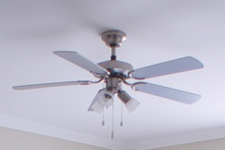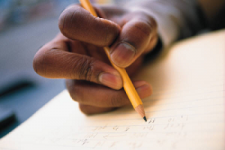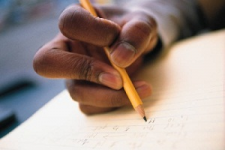How do I Improve Eye Contact in a Student with Autism?

There is a part in our brain that analyzes and recognizes faces. People with autism often may be overly sensitive in this part of the brain and may find it painful to look at a face. Others with autism may not develop this part of the brain fully or may block processing faces […]
Autism in Children: Repetitive Behavior

Autism in children manifests itself through repetitive behaviors. These are attempts by a person’s sensory-motor system to develop control or protection from feeling overwhelmed.
Here are some examples:
Nick finds a piece of string. Once he has it, he twists and twirls it between his fingers. He seems mesmerized by the string and is upset […]
Echolalia in Autism

At the beginning of typical development, babies begin to babble. This babbling is not language, but rather it is a precursor to communications. It prepares the Lower Brain to bring in language to the Upper Brain.
Many people with autism never went through this stage as a baby and sometimes may instead develop echolalia. […]
Autism Education: The Learning Environment

The learning environment is an important part of educational planning for any child. However, in the case of children with autism, this issue becomes even more important.
The environment provides a lot of sensory information to a child. The sound of birds chirping outside, the rough texture of the wooden table, the smell of […]
Autism in Children: Physical Development

Autism in children may cause physical delays. Some people with autism have serious digestive issues. Physical development is the foundation for neuro-development.
Changes in the lower brain like the cerebellum affect balance and coordination. The muscle tone of children with autism may also be different from that of typical students. Most of the time, […]
Autism in Children: Physical Development

Autism in children often results in delays in their physical development. It affects the lower brain which is responsible for the child’s balance and coordination. The muscle tone of children with autism may also be different from that of typical students.
Most of the time, both gross and fine motor activities are affected by […]
Recognizing the Signs of Autism

The Autism Society of America defines autism as a ‘complex developmental disability that typically appears during the first three years of ones life’. It is the result of neurological differences that affect normal processing and reactions of the body and brain. Both children and adults with autism typically show difficulties in verbal and […]




